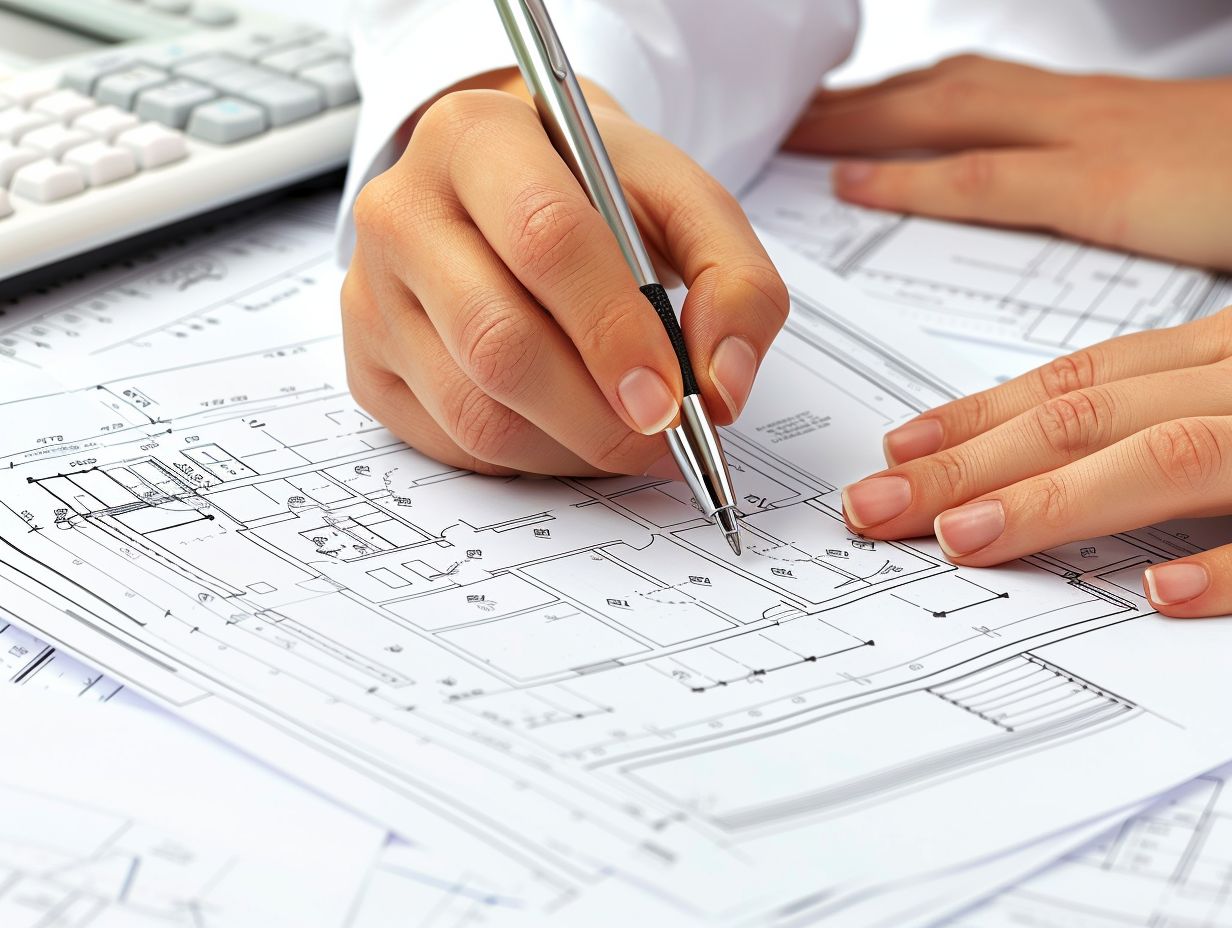
Technology’s Impact on Home Remodeling and Structural Engineering
In today’s rapidly evolving technological landscape, the fields of home remodeling and structural engineering have been significantly transformed. This article will delve into the impact of technology on these essential industries, exploring how advancements have revolutionized the way projects are planned, executed, and completed.
From the use of 3D modeling and virtual reality to the integration of smart home technologies, we will examine the innovative tools and techniques that have reshaped the processes of home remodeling and structural engineering. We will assess the challenges and benefits brought about by these technological advancements, addressing the potential for cost savings, increased efficiency, and the need for continuous training and adaptability.
As we navigate through the intricacies of technology’s role in these fields, we will gain a comprehensive understanding of the future trajectory of home remodeling and structural engineering in the digital age.
What is Home Remodeling?
Home remodeling encompasses a wide range of projects aimed at enhancing and updating the structure, design, and functionality of residential properties, catering to evolving lifestyle needs and aesthetic preferences.
This can include anything from a simple bathroom renovation to a complete overhaul of the kitchen, living spaces, or exterior. Current trends in home remodeling often emphasize open floor plans, energy-efficient upgrades, and smart home technology integration. Popular design elements such as minimalist interiors, sustainable materials, and multifunctional spaces have gained traction, reflecting homeowners’ desire for a more modern and environmentally conscious living environment.
Beyond aesthetics, investing in home remodeling projects also substantially enhances the property’s value, making it an attractive prospect for potential buyers or renters in the real estate market.
Definition of Home Remodeling
Home remodeling, also known as home renovation, refers to the process of making significant changes and upgrades to the structure, layout, and aesthetics of a residential property, enhancing its overall appeal, functionality, and value.
This often involves modifications to the interior and exterior, including kitchen and bathroom renovations, room additions, or even whole-house remodels. The objectives of home remodeling are to modernize outdated features, increase energy efficiency, and improve the comfort and livability of the space.
Common projects within home remodeling may encompass flooring upgrades, roof repairs, window replacements, and electrical or plumbing system enhancements. These projects are aimed at creating a more comfortable, personalized, and visually appealing living environment for the homeowners.
Types of Home Remodeling Projects
Home remodeling projects encompass a diverse range of initiatives, including kitchen renovations, bathroom upgrades, room additions, and exterior enhancements, all aimed at modernizing and improving the living spaces within a residence.
These projects serve multiple purposes, from enhancing functionality and aesthetics to increasing property value.
Kitchen renovations, for example, often involve updating appliances, cabinetry, and countertops, while bathroom upgrades may focus on installing modern fixtures and creating a spa-like ambiance.
Room additions allow for expanding living space, while exterior enhancements like landscaping and outdoor living areas maximize curb appeal and create inviting outdoor leisure spaces.
Popular trends include eco-friendly designs, smart home integrations, and open-concept layouts.
How Has Technology Changed Home Remodeling?
The integration of technology has revolutionized home remodeling practices, introducing innovative solutions such as smart home automation, digital design tools, and sustainable building materials that have redefined the renovation and upgrade processes for residential properties.
These advancements have streamlined the planning and execution of remodeling projects, allowing homeowners to visualize design concepts through virtual reality applications and 3D modeling software. The integration of smart home technology has enhanced convenience and energy efficiency, with features like automated lighting, climate control, and security systems.
Sustainable materials, such as eco-friendly insulation and energy-efficient windows, promote eco-conscious living and reduce the environmental footprint of home renovations.
Use of 3D Modeling and Virtual Reality
The utilization of 3D modeling and virtual reality technologies has revolutionized the design and visualization process in home remodeling, enabling stakeholders to experience immersive digital prototypes and realistic visualizations of proposed renovations and alterations.
These innovative tools have empowered homeowners, architects, and interior designers to explore different design scenarios and make informed decisions before initiating any physical changes. 3D printing technology has merged seamlessly with virtual reality, allowing for the creation of tangible prototypes based on virtual designs, giving clients a tactile experience of the proposed remodeling. This integration of design technologies has significantly enhanced the efficiency and accuracy of home remodeling projects, fostering a more collaborative and visually engaging process for all parties involved.
Advancements in Building Materials
Technological advancements have led to the development of cutting-edge building materials that prioritize sustainability, durability, and energy efficiency, offering homeowners a wide array of eco-friendly and resilient options for their remodeling projects.
These innovations in sustainable practices have revolutionized the home remodeling industry, with advancements in materials like recycled timber, bamboo, and engineered wood, all contributing to reducing environmental impact. The integration of energy-efficient materials such as insulated concrete forms and low-emissivity windows has significantly enhanced the energy conservation aspect of home designs.
The durability of these modern materials ensures longevity, reducing the need for frequent replacements and minimizing waste, aligning with the principles of sustainable living.
Smart Home Technology Integration
The integration of smart home technologies, facilitated by the Internet of Things (IoT), has revolutionized the way homeowners interact with and manage their living spaces, offering enhanced control, energy efficiency, and security through intelligent automation and interconnected smart devices.
These innovative technologies have led to a significant transformation in the home remodeling industry, allowing for seamless integration of smart devices and advanced automation systems to create personalized and efficient living environments. By incorporating smart thermostats, lighting controls, and security cameras, homeowners can remotely monitor and adjust their home’s settings, leading to substantial energy savings and added convenience.
The benefits of smart home technology extend beyond mere convenience, contributing to a more sustainable lifestyle and heightened peace of mind for homeowners.
What is Structural Engineering?
Structural engineering is a specialized field that focuses on the design, analysis, and implementation of building structures, encompassing the application of advanced construction techniques and materials to ensure optimal performance, safety, and durability.
It plays a critical role in the construction industry by incorporating core principles such as understanding how structures support and resist loads, considering the effects of natural forces like earthquakes, wind, and gravity, and integrating innovative design strategies to enhance building performance. Structural engineers work closely with architects and construction teams to develop solutions that not only meet functional and aesthetic requirements but also adhere to safety regulations and sustainability standards, ultimately shaping the physical landscape and the way buildings withstand environmental challenges.
Definition of Structural Engineering
Structural engineering entails the meticulous design and analysis of building elements, involving rigorous structural analysis, application of building science principles, and the integration of innovative techniques to ensure structural integrity and performance.
This field plays a pivotal role in the construction and development of various structures, including bridges, skyscrapers, dams, and residential buildings. Structural engineers evaluate the materials and components used in construction, ensuring that they can withstand the anticipated loads and environmental conditions. Their work encompasses considerations of safety, sustainability, and functionality, contributing to the overall success and longevity of a building.
Through advanced technology and computational tools, structural engineers continually strive to enhance the efficiency and safety of structures, meeting the demands of an ever-evolving architectural landscape.
Importance of Structural Engineering in Home Remodeling
The role of structural engineering in home remodeling is pivotal, as it encompasses retrofitting, modernization, and structural safety measures that ensure the integrity, resilience, and safety of renovated residential properties in compliance with building codes and standards.
This discipline involves the assessment and redesign of existing structures, ensuring they meet current standards and regulations. By incorporating state-of-the-art materials and technologies, structural engineers enhance the overall functionality and longevity of homes. From reinforcing foundations to optimizing load-bearing capacities, their expertise is instrumental in achieving a balance between aesthetics and safety.
Ultimately, their contributions facilitate the seamless integration of modern amenities and sustainable practices within the existing framework of residential spaces.
How Has Technology Impacted Structural Engineering?
The technological impact on structural engineering has been profound, ushering in a digital transformation that encompasses advanced structural rehabilitation methods, engineering solutions, and innovative tools aimed at enhancing the efficiency and accuracy of structural analyses and design processes.
These advancements have revolutionized the way engineers approach projects, allowing for precise and detailed simulations and evaluations that were previously time-consuming and labor-intensive. With the integration of digital technologies, structural rehabilitation initiatives have gained new capabilities, enabling engineers to develop customized solutions tailored to specific challenges.
The evolution of engineering solutions has led to the adoption of sustainable and resilient design principles, aligning with the global push towards environmentally conscious practices within the construction industry.
Use of Computer-Aided Design (CAD)
The utilization of Computer-Aided Design (CAD) software has revolutionized the structural engineering landscape, facilitating precise modeling, code compliance assessments, and adherence to rigorous building codes, thereby ensuring structural integrity and regulatory compliance.
This digital approach streamlines the design process, allowing for efficient and accurate creation of complex structural models. CAD enables engineers to perform comprehensive code compliance assessments, ensuring that designs meet the stringent requirements outlined in building codes.
By integrating building code parameters directly into the design software, CAD helps in identifying and mitigating potential compliance issues early in the design phase, ultimately leading to safer and more resilient structures.”
Utilization of Building Information Modeling (BIM)
The implementation of Building Information Modeling (BIM) has revolutionized collaborative efforts within the structural engineering domain, enabling enhanced coordination, streamlined building inspections, and comprehensive data integration for multifaceted construction and renovation projects.
This innovative technology allows various stakeholders, including architects, engineers, and construction teams, to work together seamlessly, resulting in improved project outcomes. BIM facilitates building inspection capabilities by providing a virtual representation of the structure, enabling thorough analysis and identification of potential issues before construction begins.
The integration of data through BIM enhances communication and efficiency, ultimately leading to cost and time savings throughout the project lifecycle.
Implementation of Structural Analysis Software
The implementation of advanced structural analysis software has significantly enhanced project management processes and structural monitoring capabilities, enabling comprehensive assessments, predictive modeling, and real-time monitoring for improved construction and renovation outcomes.
This technology allows engineers to analyze complex structural designs, identify potential weaknesses, and optimize material usage, leading to more cost-effective and sustainable construction projects. By integrating structural analysis software with project management tools, teams can streamline collaboration, improve scheduling, and ensure efficient resource allocation.
The software’s ability to provide real-time data on structural performance enables timely interventions and maintenance, enhancing the overall safety and longevity of infrastructure. Predictive modeling ensures preemptive measures for structural integrity, reducing the risk of costly repairs and unforeseen structural failures.”
Challenges and Benefits of Technology in Home Remodeling and Structural Engineering
The integration of technology in home remodeling and structural engineering presents a myriad of challenges and benefits, encompassing potential cost savings, enhanced efficiency, and the imperative need for continuous training and adaptability to ensure building resilience and performance.
These advancements have revolutionized the industry, allowing for precision in design, efficient project management, and sustainable building solutions. The reliance on technology also introduces challenges, such as the need for skilled personnel, up-to-date software, and the potential barriers to implementation.
The integration of various digital tools, from Building Information Modeling (BIM) to virtual reality simulations, demands a proactive approach in fostering a tech-savvy workforce and embracing the continuous learning curve associated with technological advancements in construction and remodeling.
Potential for Cost Savings
The adoption of technological solutions in home remodeling and structural engineering presents opportunities for significant cost savings, driven by improved construction efficiency, streamlined labor processes, and optimized resource utilization.
By leveraging advanced software and digital tools, construction firms can enhance project planning, design, and execution. This can result in precise material estimation, reduced material wastage, and improved project timelines. The integration of Building Information Modeling (BIM) technology facilitates collaborative workflows, enabling stakeholders to identify and address potential issues early in the process, thus minimizing costly rework. These advancements not only lead to reduced project costs but also contribute to sustainability efforts by minimizing environmental impact through efficient resource management.
Increased Efficiency and Accuracy
Technological advancements have led to increased efficiency and accuracy in home remodeling and structural engineering processes, facilitated by innovative automation, intelligent project management tools, and streamlined workflows that enhance overall project performance and delivery.
This integration of automation in project management has revolutionized the construction industry by promoting real-time collaboration, cost-effectiveness, and precise scheduling. Advancements in structural engineering software have improved accuracy in design and analysis, allowing for sophisticated structural solutions and optimized material usage. With the help of these technological tools, project teams can now streamline communication, reduce errors, and maximize productivity, resulting in enhanced quality and timely completion of home remodeling and structural engineering projects.
Need for Continued Training and Adaptability
The integration of technology necessitates a continuous focus on training and adaptability for professionals involved in home remodeling and structural engineering, emphasizing the importance of developing collaborative skills, effective communication, and technical proficiency for harnessing the full potential of technological tools.
Continuous training and adaptability are essential for professionals navigating the evolving landscape of technology integration. Staying abreast of the latest industry advancements and trends through ongoing education and skill development is paramount.
Collaboration and communication skills play a pivotal role in fostering synergy and innovation within teams, facilitating effective project management, and ultimately ensuring successful technology integration. Proficiency development across various software platforms is equally crucial, enabling professionals to harness the capabilities of technology for improved efficiency and project outcomes.




No Comments